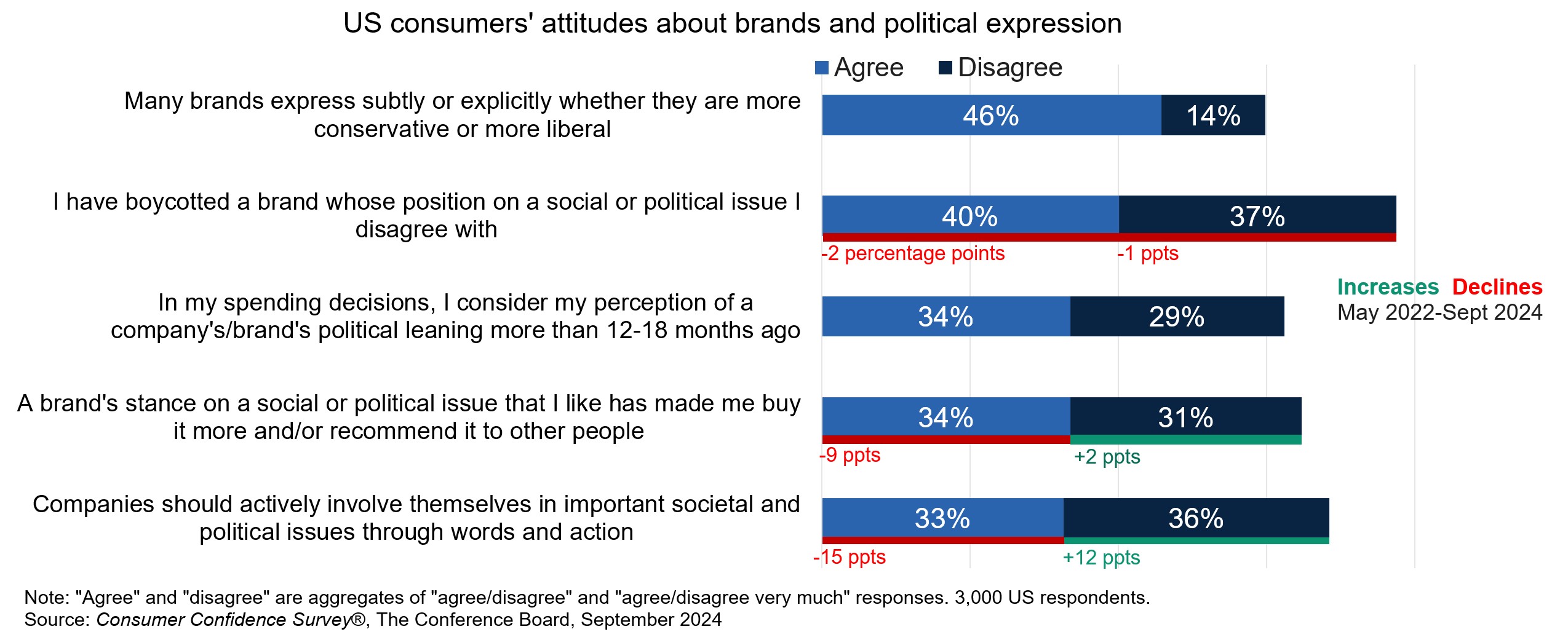
The US elections have shown a divided country at the ballot box, but this doesn’t have to be the case at the store. In fact, by emphasizing values that are not perceived as aligning with a specific political party but are more universally embraced, brands can tap into a broader market and be unifiers as a side effect. Such values can include quality, innovation, health, human connection, or happiness.

The pendulum is shifting away from an emphasis on progressive values. In recent years, brands have increasingly taken stances on social and political issues, driven in part by the interests of the youngest generations—a large current and future customer base with the power to influence other generations. Gen Y and Gen Z grew up environmentally and socially conscious, diverse, and vocal, with their digital savvy amplifying their voice on social media and influencing brand strategies. But this influence has cont

Members of The Conference Board get exclusive access to Trusted Insights for What’s Ahead® through publications, Conferences and events, webcasts, podcasts, data & analysis, and Member Communities.
